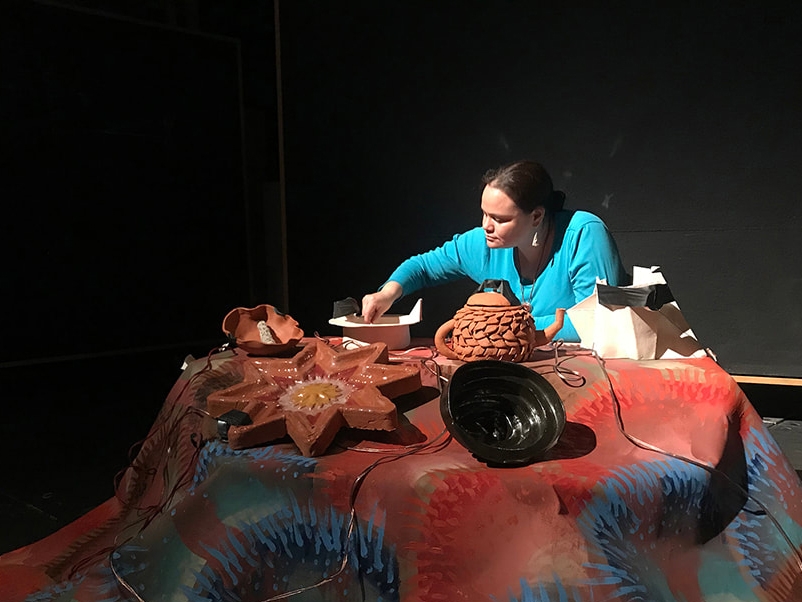When approaching this project, I decided to base it on my current living situation. I have been living in my mother’s closet, a small room around seven square meters, in a small town in New Jersey. So, I decided to use my room as the subject. To effectively convey my ideas, I thought it was crucial to create a realistic the sense of space through sounds. Usually, sounds that exist in the environment but are not intentionally created are just regarded as noise. We are so used to them that they seem flat, as in they blend in all together in the background and we almost ignore them. However, it was important for me to avoid that. I wanted the sounds to be clear and identifiable. I wanted the audience to be able to tell where they are coming from and how they are interacting with each other. So, I recorded each source of sound that is happening in my room during that time period separately, and reconstructed them together, as close to reality as possible. By using stereo sounds and manipulating left and right tracks, I was able to recreate where the sounds were coming from. My project focuses on the emotions in the environment; however, emotions are usually really subtle, they usually don’t get noticed, more so since we are dealing with an uncommon subject. So, I thought the best way to clarify is to have comparisons. I chose four different time periods of the day, 7:30 a.m., 2:00p.m., 7:00p.m. and 11:00p.m. During these time periods, I would place my phone in different part of the room to record. I would continue doing what I was doing, since my interaction with the room is part of the project. Naturally, the sound piece became four parts. I decided to use four photos taken at each time period to indicate the time difference. I had some debate over having a visual reference since I thought the most powerful aspect of sound is that it eliminates the elements that we are usually drawn to, such as, the functionality, smell, visual, surface area of the space. When these distractions are absent, the audience is forced to focus on the sounds and experience sounds in the environment in a new perspective. With these considerations in mind, I decided to take photos of the same corner of my room that is next to the window. I think doing so suggests the shift in lighting in the room without providing the audience too much visual information about the room.

Responses